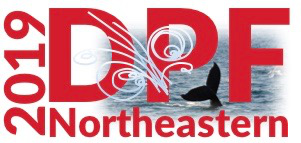Speaker
Description
Future long baseline neutrino experiments such as the Deep Underground Neutrino Experiment (DUNE) call for the deployment of multiple multi-kiloton scale liquid argon time projection chambers (LArTPCs). To date, two detector readout technologies are being studied in large-scale prototype detectors: the single phase (SP) and dual phase (DP) detectors using projective charge readout wire/strip based anode planes. These projective readout technologies come with a set of challenges in the construction of the anode planes, the continuous readout of the system required to accomplish the physics goals of proton decay searches and supernova neutrino sensitivity, and disambiguation in the 2D projective reconstruction of complex neutrino topologies.
The Q-Pix concept (arXiv: 1809.10213) provides a novel alternative, avoiding the challenges above, but requiring demonstration of perceived benfits. Q-Pix is based on a continuously integrating low-power charge-sensitive amplifier (CSA) coupled to a regenerative comparator with fixed threshold. The comparator resets the CSA when threshold is exceeded. The instant of reset time is captured with ~10 ns rms resolution. The value is buffered and the cycle then begins again. What is exploited in this new architecture is the time difference between one clock capture and the next sequential capture, called the Reset Time Difference (RTD). The RTD measures the time to integrate a predefined integrated charge (Q). An event is completely characterized by the RTD sequence, which is straightforwardly converted to a waveform. In quiescent mode the RTDs will be evenly spaced with time intervals of seconds between RTDs with an event signaled by the appearance of a sequence of varying µs RTDs. This technique easily distinguishes the background RTDs due to 39Ar decays (which also provide an automatic absolute charge calibration) and signal RTD sequences due to ionizing tracks. Q-Pix offers the ability to extract all useful track information with very detailed track profiles. A dynamically established network for DAQ is proposed for exceptional resilience against single point failures. This talk will present the Q-Pix concept and ongoing R&D to realize this technology




